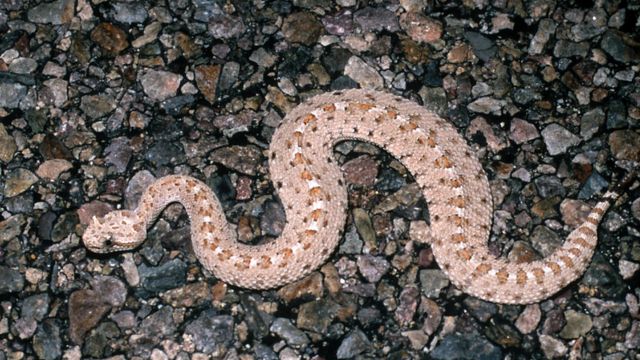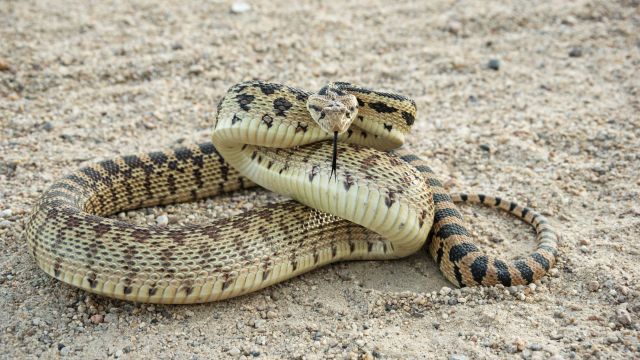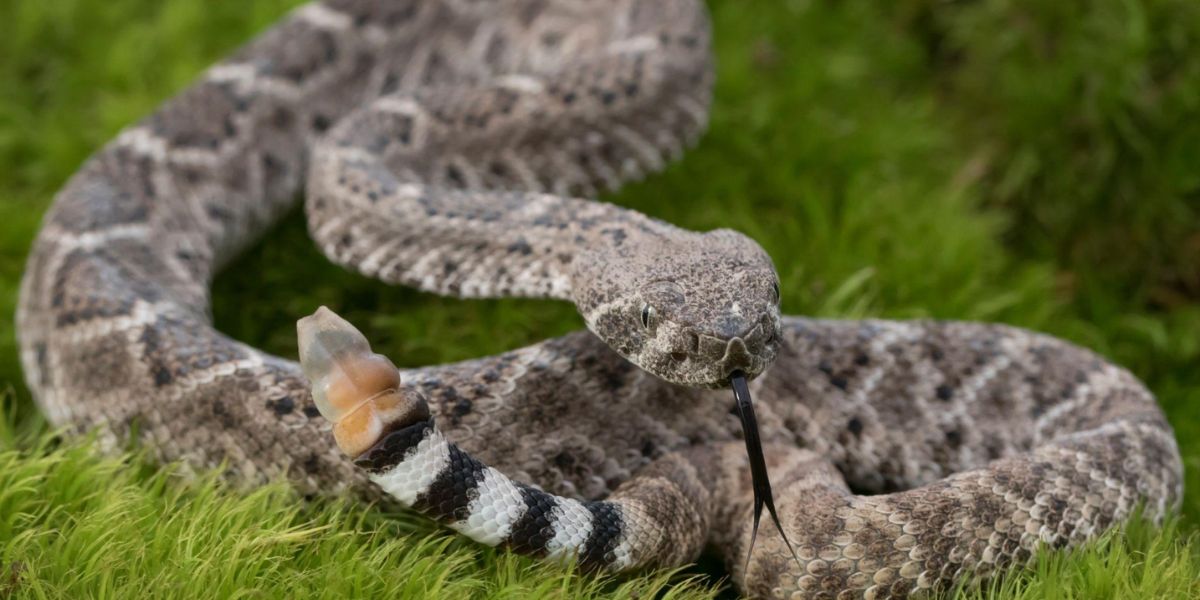There are ten distinct species of rattlesnakes in California, and each has a special history and role in the wild areas of the state.
Each of these snakes has established an own niche in California’s landscape, from the little sidewinders that sway across the desert sands to the magnificent western diamondbacks that guard the borderlands.
Something that may surprise you is this: These are the only deadly snakes in California, despite what you may have heard. (Copperheads and water moccasins, for instance, are not found in California.)
Let’s examine California’s poisonous snakes in more detail. They are all members of the rattlesnake family.
Mojave Desert Sidewinder
Due to their raised scales that resemble horns, these snakes—which are closely related to the Colorado Desert Sidewinder—are frequently referred to as “horned rattlesnakes.”
They live in the sandy areas of the Mojave Desert, where they frequently burrow into loose sand during the hot days—a process known as cratering. In times of intense heat, these snakes have evolved an intriguing habit: they will “dance” on scorching sand, avoiding contact by maintaining the majority of their body above the ground.
Like its cousins from the Colorado Desert, their venom mostly affects tissue and causes excruciating agony and swelling. Although they are renowned for their accurate blows, they are often timid and quickly back off when confronted.
Colorado Desert Sidewinder
These remarkably little snakes have developed a special method of traveling through the dunes of the desert. They leave behind characteristic J-shaped traces from their unique sidewinding action.
They blend in well with their desert environment because to their cream-colored body and horn-like scales over each eye.
These snakes, which rarely grow longer than two feet, are most active in the cooler evening hours and are found in the sandy regions of the Colorado Desert in southeast California.

Their hunting technique is distinctive; they would half bury themselves in the sand, exposing only their eyes and the tip of their tail, in order to ambush small rodents or passing lizards.
Their venom is not as strong as that of larger rattlesnakes, but it can still inflict severe pain, swelling, and tissue damage, so a bite needs to be treated right once.
Southern Pacific Rattlesnake
These snakes have evolved to survive in the diverse landscape of southern California, which includes both the mountains and the shore.
Their varied habitats are reflected in their pigmentation, which varies from dark gray to brown. They can result in more frequent human contacts because they are especially prevalent in chaparral and along the urban-wildland boundary.
The largest Southern Pacific Rattlesnakes can grow up to 55 inches in length. Compared to other rattlesnakes, they can exhibit quite brazen behavior; when confronted, they are known to defend themselves rather than flee.
Their venom is especially complicated since it contains both neurotoxins and substances that harm tissue.
Maryland Fire Regulations: Is It Legal to Burn on Your Own Property?
Great Basin Rattlesnake
From the high desert to the mountains and meadows, these versatile snakes can be found across California. They rarely grow longer than 36 inches, but they can be as big as 48 inches.
They prefer to sit and wait on their food, which is primarily mice and other small rodents, just like the majority of rattlesnakes.

Although they prefer to eat lizards and rodents, they are one of the few, if not the only, species of rattlesnakes known to consume eggs.
This is one of its distinguishing characteristics. Although their bite is rarely lethal, their venom is mostly hemotoxic, inflicting tissue destruction and excruciating pain. Despite their intricate defensive responses, these snakes typically prefer to stay out of conflict.
Georgia Fire Regulations: Is It Legal to Burn on Your Own Property?
Panamint Speckled Rattlesnake
Named for the Panamint Range, these snakes are masters of camouflage. Their bodies carry a distinctive speckled pattern that matches the rocky terrain they inhabit.
Found in the desert mountain ranges of eastern California, they prefer rocky slopes and canyon walls. The Panamint is known for their unusual hunting technique; they’ll often hang their bodies over rock edges to ambush prey passing below.
Their venom is highly hemorrhagic, causing severe bleeding and tissue damage. Despite their potent venom, they’re known for being relatively calm and often give multiple warnings before striking. Medium to large in size, they grow up to 52 inches in length.








